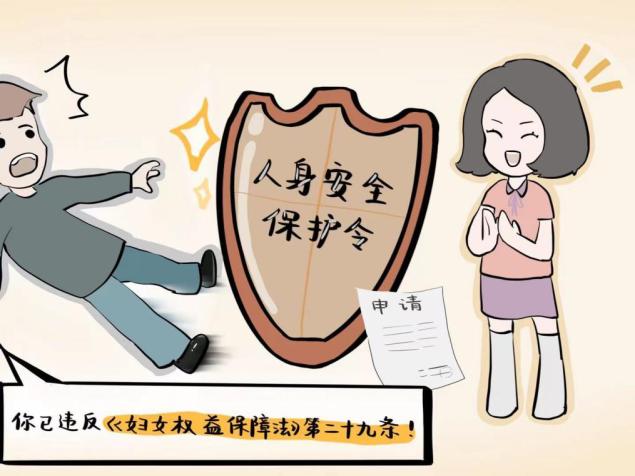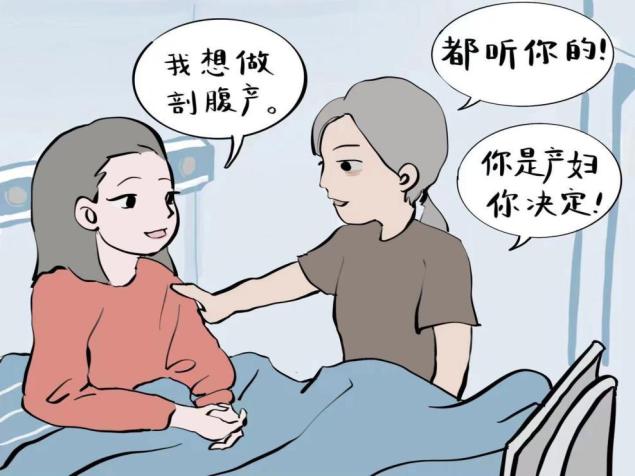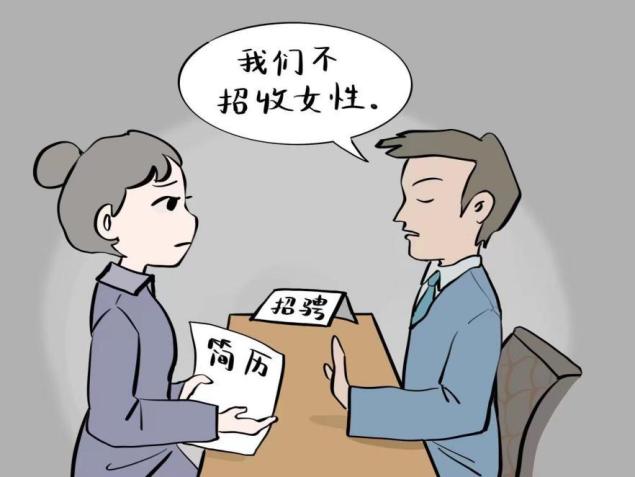The Rationality of "Wild Goose" | "Escort for" She "in the Name of" Law "—— Interpretation of the Highlights of the Newly Revised Law on the Protection of Women’s Rights and Interests

Image source network
The newly revised Law on the Protection of Women’s Rights and Interests in People’s Republic of China (PRC) came into effect on January 1, 2023, which is another "overhaul" since the law was implemented for 30 years. After revision, the new law has been increased from 61 articles in 9 chapters to 86 articles in 10 chapters. The newly revised Law on the Protection of Women’s Rights and Interests has made a positive response to the current problems of infringing on women’s legitimate rights and interests in areas such as marriage and childbirth, property distribution and personal rights.
Wonderful "politics" of women, the judge said.
Judge Gao Chaoxiu of the post of the Third People’s Court of Yanjiang District Court

3.8 Women’s Day is approaching. Let’s take a look at the highlights of the revised Law on the Protection of Women’s Rights and Interests interpreted by Judge Gao.
1. Clarify the remedies and prevention measures for sexual harassment.

The newly revised Law on the Protection of Women’s Rights and Interests clearly points out that it is forbidden to sexually harass women against their will by means of words, words, images and physical behaviors. This shows that sexual harassment is no longer limited to physical teasing, and inappropriate remarks such as chatting with women and sending indecent pictures can be considered as sexual harassment.


▲ [Video screenshot] Tong Wenjie in the TV series "Little Joy" and Li Fangning in "The Bottom Line" all suffered sexual harassment in the workplace.
The newly revised Law on the Protection of Women’s Rights and Interests puts the legal responsibility in Chapter VIII of the old law as Chapter IX, and adds relief measures as Chapter VIII, creating a series of new relief channels for women whose rights and interests have been violated. For example, any organization or individual has the right to dissuade, stop or file a complaint or report to the relevant departments for acts that infringe on women’s legitimate rights and interests; Women themselves can seek help from women’s organizations such as women’s federations; The human and social departments, together with trade unions and women’s federations, conduct interviews with employers who infringe on women’s rights and interests and supervise them according to law; The people’s governments at or above the county level shall open a hotline for the protection of women’s rights and interests; Procuratorial organs can issue judicial suggestions or bring public interest litigation.
2. Expand the scope of application of personal safety protection orders,
Strengthen the protection of women in love and after divorce.


“
Law link
Article 29 It is forbidden to pester or harass women, and to disclose or disseminate women’s privacy and personal information on the grounds of falling in love or making friends, or after the termination of love relationship or divorce.
If a woman suffers from the above-mentioned infringement or faces the real danger of the above-mentioned infringement, she may apply to the people’s court for a personal safety protection order.
Personal safety protection order refers to a civil ruling issued by the people’s court to order the perpetrator to stop domestic violence for the parties who suffer from domestic violence or face the real danger of domestic violence. The newly revised Law on the Protection of Women’s Rights and Interests, on the basis of the anti-domestic violence law, extends the application scope of the personal safety protection order to love, make friends and divorce. That is to say, if one party pesters and harasses women, divulges and disseminates women’s privacy and personal information after the termination of love relationship or divorce, women can also apply to the court for a personal safety protection order. The provision of Article 29 is a practical expansion of the personal safety protection order system, and also a refinement of the prohibition of personality rights in Article 997 of the Civil Code.
At this point, the anti-domestic violence law and the law on the protection of women’s rights and interests have built a firm protection wall for women victims, providing accurate and powerful protection for women from personal infringement by close relatives in three stages: before, during and after, and propping up a clear sky under the rule of law for "her".
3. Respect women’s wishes and special needs,
Safeguard women’s physical rights and personal freedom.


“
Law link
Article 21, paragraph 3: When a medical institution performs a fertility operation, special examination or special treatment, it shall obtain the consent of the woman herself; When women disagree with their families or related parties, they should respect their own wishes.
4. Prohibit gender discrimination in employment and adhere to equality between men and women.


In life, many women are almost always asked "Are you married" and "Do you have children" in job interviews. Marriage and childbirth have become a major obstacle to women’s employment. In this regard, Article 43 of the newly revised Law on the Protection of Women’s Rights and Interests has made five prohibitive provisions on the recruitment (employment) process of employers:
“
Law link
In the process of recruitment (employment), the employing unit shall not carry out the following acts unless otherwise stipulated by the state:
(a) limited to men or male priority;
(two) in addition to the basic personal information, to further inquire or investigate the marriage and childbearing situation of female job seekers;
(3) Taking pregnancy test as an entry physical examination item;
(four) to restrict marriage, childbearing or marriage and childbearing status as a condition for admission (employment);
(5) Other acts of refusing to employ women on the grounds of gender or differentially raising the standards for employing women.
5. Protecting women’s legitimate property rights and interests


“
Law link
Article 66 Women have equal rights with their spouses to possess, use, benefit and dispose of the joint property of husband and wife, and are not affected by the income situation of both parties.
For immovable property jointly owned by husband and wife and movable property that can be jointly registered, the woman has the right to request that her name be recorded in the ownership certificate; If it is considered that the recorded rights holder, the subject matter, the proportion of rights and other matters are wrong, it has the right to apply for correction registration or objection registration according to law, and the relevant institutions shall go through the corresponding registration procedures according to their applications.
Article 67 (2) During the divorce proceedings, both husband and wife have the obligation to declare all the joint property of husband and wife to the people’s court. If one party conceals, transfers, sells off, damages or squanders the joint property of the husband and wife, or forges the joint debt of the husband and wife in an attempt to occupy the property of the other party, when the joint property of the husband and wife is divided in divorce, the party may be given less or no property.
This provision can not only improve the efficiency of the people’s court in dividing the joint property of husband and wife, but also protect the legitimate property rights and interests of women.
The newly revised Law on the Protection of Women’s Rights and Interests attaches great importance to mobilizing all social forces to care for, care for and support women’s development, conforms to women’s new demands for a better life, effectively enhances women’s sense of acquisition, happiness and security, and creates a more just and harmonious social environment for women.
Original title: The Rationality of "Wild Goose" | "Escort for" She "in the Name of" Law "—— Interpretation of the Highlights of the Newly Revised Law on the Protection of Women’s Rights and Interests"
Read the original text